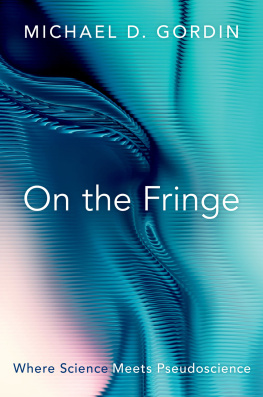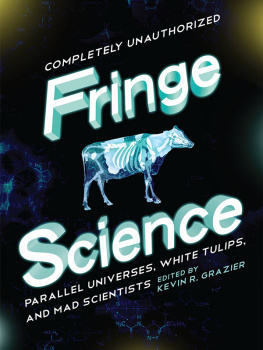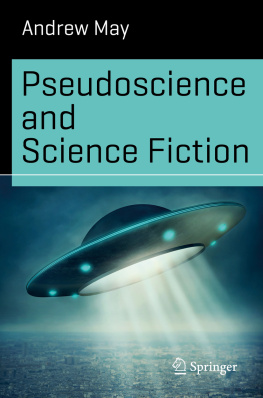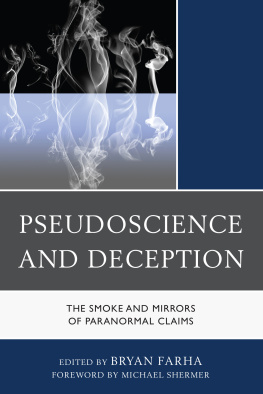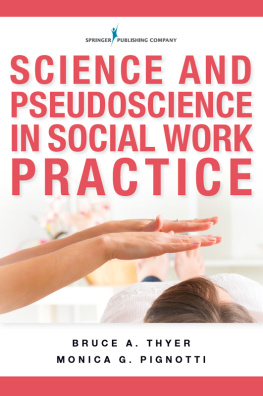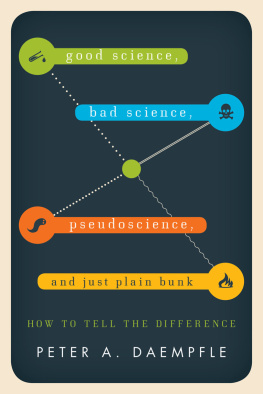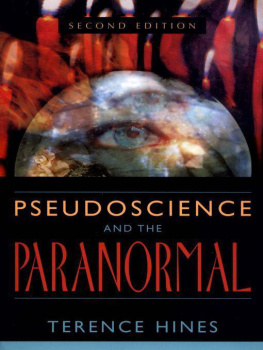ON THE FRINGE

Oxford University Press is a department of the University of Oxford. It furthers the Universitys objective of excellence in research, scholarship, and education by publishing worldwide. Oxford is a registered trade mark of Oxford University Press in the UK and certain other countries.
Published in the United States of America by Oxford University Press
198 Madison Avenue, New York, NY 10016, United States of America.
Oxford University Press 2021
All rights reserved. No part of this publication may be reproduced, stored in a retrieval system, or transmitted, in any form or by any means, without the prior permission in writing of Oxford University Press, or as expressly permitted by law, by license, or under terms agreed with the appropriate reproduction rights organization. Inquiries concerning reproduction outside the scope of the above should be sent to the Rights Department, Oxford University Press, at the address above.
You must not circulate this work in any other form and you must impose this same condition on any acquirer.
Library of Congress Cataloging-in-Publication Data
Names: Gordin, Michael D., author.
Title: On the fringe : where science meets pseudoscience / Michael D. Gordin.
Description: New York, NY : Oxford University Press, [2021] |
Includes bibliographical references and index.
Identifiers: LCCN 2020042688 (print) | LCCN 2020042689 (ebook) |
ISBN 9780197555767 (hardback) | ISBN 9780197555781 (epub)
Subjects: LCSH: PseudoscienceHistory.
Classification: LCC Q172.5.P77 G673 2021 (print) | LCC Q172.5.P77 (ebook) | DDC 500dc23
LC record available at https://lccn.loc.gov/2020042688
LC ebook record available at https://lccn.loc.gov/2020042689
Contents
Pseudoscience is not a real thing. The term is a negative category, always ascribed to somebody elses beliefs, not to characterize a doctrine one holds dear oneself. People who espouse fringe ideas never think of themselves as pseudoscientists; they think they are following the correct scientific doctrine, even if it is not mainstream. In that sense, there is no such thing as pseudoscience, just disagreements about what the right science is. This is a familiar phenomenon. No believer ever thinks she is a heretic, for example, or an artist that he produces bad art. Those are attacks lobbed by opponents.
Yet pseudoscience is also real. The term of abuse is deployed quite frequently, sometimes even about ideas that are at the core of the scientific mainstream, and those labels have consequences. If the reputation of pseudoscience solidifies around a particular doctrine, then it is very hard for it to shed the bad reputation. The outcome is plenty of scorn and no legitimacy (or funding) to investigate ones theories. In this, pseudoscience is a lot like heresy: if the label sticks, persecution follows.
Sorting out these kinds of debates has traditionally been the domain of philosophy. For religion, we use theology to discriminate between correct and incorrect belief (though that does not mean people agree on the right way to reason theologically). For art, there is aesthetics, and disagreement is rampant there as well. For scientific knowledge, the relevant philosophical domain is epistemology, the philosophy of knowledge. Epistemology hits similar roadblocks when it comes to separating science and pseudoscience. This book explores those problems and offers some alternative, nonphilosophical ways to think about the issues. The main approach will be historical: looking at debates from over the past several centuries about what constitutes pseudoscience in order to learn what arguments about the boundaries of acceptable knowledge can tell us about the scientific enterprise as a whole.
This book concerns debates within the natural sciences, and not arguments over the humanities and social sciences. Only rarely will medicine come up, and in those instances the focus is on the intersection of medical knowledge with the practices of scientific research. It is hard to exclude phenomena like alternative medicine entirely, but the distinction is nonetheless conceptually significant. The problem of quackery in medicine is analogous to pseudoscience, but sometimes even false treatments can make the patient feel better. Efficacy provides a nonepistemological standard in medicine in a way that does not quite happen in science. Tackling pseudoscience separately focuses us on the problem of what counts as truth. Some medical claims tackle that head-on, but many others do not.
Understanding how pseudoscience works is an important matter. The problem of reliable knowledge is quite general, ranging from medical treatments to fake news to rumors floating among your circle of friends. Thinking about doctrines that have been called pseudosciencecreationism, psychical research, UFOlogy, Nazi eugenics, or cold fusionhighlights the dilemmas sharply. What you find in these pages can prove broadly applicable, even if you dont care about Bigfoot.
Any discussion of pseudoscience must start with the so-called demarcation problem. Indeed, without a proposed solution to the demarcation problemvalid or invalid, explicit or implicitthe term pseudoscience has no real meaning. If there were a universally recognized and workable demarcation criterion (as one calls a solution to the demarcation problem), then the task of this book would be simple: those doctrines that passed the test would be science, and those that failed would be pseudoscience. Alas, the demarcation problem has to date eluded resolution. There are good reasons to think that it will remain a puzzle, which means that debates about what counts as pseudoscience will always be with us.
In fact, we have wrestled with the problem of demarcation for as long as domains of knowledge about the natural world have claimed authoritative status. One of the oldest medical writings in the Western tradition, the fifth-century BCE Hippocratic text On the Sacred Disease, is essentially a demarcation document about how to understand and treat what we now call epilepsy. In the text, the authorconventionally called Hippocrates, though these documents were likely composed by a variety of authors over a sizable span of timelambastes the sort of people we now call witch-doctors, faith-healers, quacks and charlatans. Instead, Hippocrates provides his own theory of the cause of epilepsy, and explains why no faith healer deserves the title of physician. Every claim to scientific authority necessarily implies the exiling of rivals from it.
The basic formulation of the demarcation problem is: how should we distinguish science from pseudoscience? Yet there are really several demarcation problems. There is the core question of epistemology: how do you sift correct knowledge from incorrect claims? Beyond that you also might want to differentiate science from all those domains (art history, theology, gardening) that are nonscience, or from those things that look an awful lot like science but for some reason do not quite make it. This last set, the imposters, are frequently designated pseudosciences. Any demarcation criterion worthy of the name ought to be able to distinguish science from them.
The term demarcation problem was coined by the philosopher Karl Popper, and his demarcation criterion remains the most commonly invoked among scientists, philosophers, and those undergraduates who have views on this subject. We will start, then, with the philosopher and his criterion of falsifiability, before elaborating why the criterion fails.

